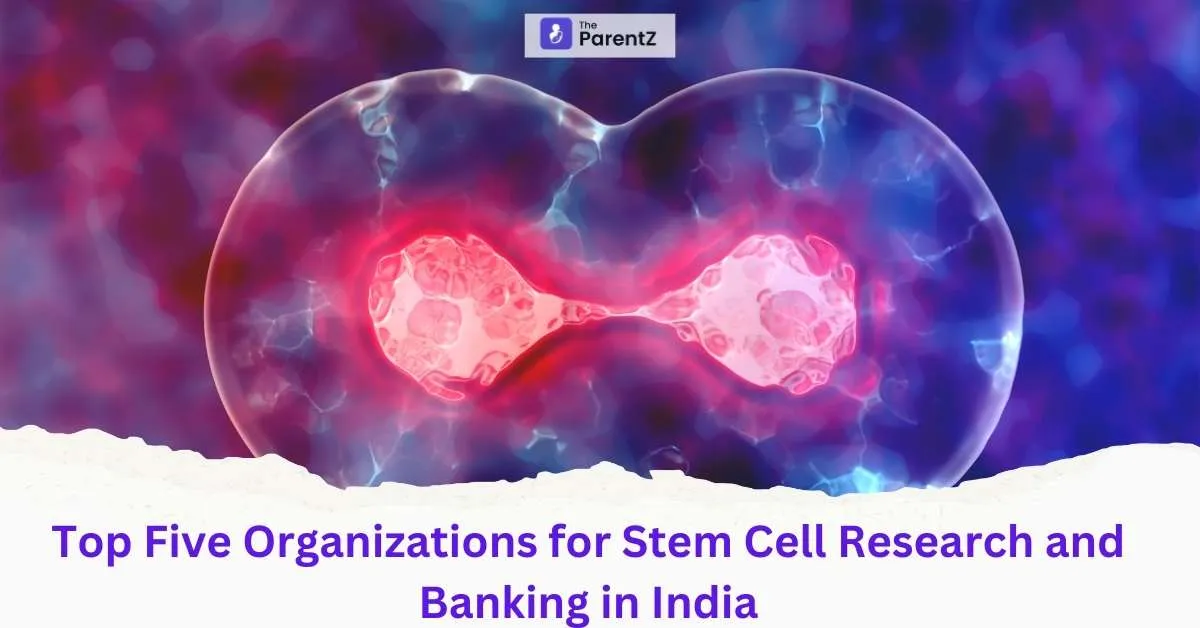India has emerged as a global leader in stem cell research and banking, blending scientific innovation with cost-effective solutions. This article delves into five pioneering organizations driving advancements in regenerative medicine, therapeutic applications, and stem cell preservation. Each institution’s unique contributions, challenges faced by the sector, and future prospects are explored in detail.
1. National Centre for Cell Science (NCCS), Pune
Overview: Established in 1988 under the Department of Biotechnology, the National Centre for Cell Science (NCCS) is a premier autonomous institute dedicated to cell biology research. Located in Pune, NCCS has become a cornerstone of India’s stem cell research ecosystem, housing state-of-the-art laboratories and a vast repository of cell lines.
Research Focus: NCCS focuses on cutting-edge areas such as:
- Cancer Stem Cells: Investigating mechanisms driving tumor resistance and metastasis.
- Neurodegenerative Disorders: Developing stem cell-based therapies for Alzheimer’s and Parkinson’s diseases.
- Infectious Diseases: Exploring how stem cells modulate immune responses to pathogens like tuberculosis.
Key Contributions
- Indigenous Stem Cell Lines: In 2009, NCCS created India’s first embryonic stem cell line, reducing reliance on imported materials. This breakthrough enabled localized research and cost-effective therapies.
- Public Cord Blood Banking: NCCS operates one of India’s few public cord blood banks, providing matched stem cell units for thalassemia and leukemia patients. Over 1,000 transplants have been facilitated since its inception.
Facilities and Training
- Cell Repository: Houses over 2,000 cell lines, including rare disease-specific lines, accessible to researchers nationwide.
- Workshops and Fellowships: Offers specialized training in stem cell culture and CRISPR gene editing, nurturing the next generation of scientists.
2. Reliance Life Sciences, Mumbai
Overview: A subsidiary of Reliance Industries, Reliance Life Sciences (RLS) was founded in 2001 with a mission to democratize advanced therapies. Leveraging its parent company’s resources, RLS has pioneered affordable stem cell treatments for chronic diseases.
Therapeutic Innovations
- Cardiovascular Repair: RLS uses adult stem cells from bone marrow to regenerate damaged heart tissue post-myocardial infarction. Clinical trials showed a 30% improvement in ejection fraction among participants.
- Diabetes Management: Their research on pancreatic islet cell transplantation aims to reduce insulin dependency in Type 1 diabetes patients.
Milestones
- First HSCT in India: In 2003, RLS conducted India’s first hematopoietic stem cell transplant (HSCT) for thalassemia, achieving a 70% survival rate.
- ReCell® Technology: A patented autologous skin regeneration system for burn victims, reducing healing time by 50% compared to traditional grafts.
Banking Services
- Private Cord Blood Banking: ISO-certified labs preserve cord blood units with 99% viability, offering families a biological insurance policy.
3. Stempeutics Research, Bengaluru
Overview: A collaboration between the Manipal Group and Cipla, Stempeutics Research was established in 2006 to bridge the gap between academic research and clinical applications. Headquartered in Bengaluru, it specializes in mesenchymal stem cells (MSCs).
Flagship Product: Stempeucel®
- Approval and Use: In 2020, Stempeucel® became Asia’s first approved MSC therapy, targeting osteoarthritis and critical limb ischemia. Trials demonstrated a 40% reduction in pain and improved mobility in 80% of patients.
- Mechanism: MSCs modulate inflammation and promote tissue repair through paracrine signaling.
Clinical Trials and Collaborations
- COPD and Liver Cirrhosis: Partnering with Germany’s Fraunhofer Institute, Stempeutics is testing MSC infusions to regenerate lung and liver tissues.
- Proprietary Pooling: A unique method to amplify MSC yields from a single donor, slashing production costs by 60%.
Global Recognition
- Stempeutics’ work has been published in The Lancet and endorsed by the International Society for Stem Cell Research (ISSCR).
4. LifeCell International, Chennai
Overview: Founded in 2004, LifeCell is India’s largest stem cell bank, preserving over 500,000 cord blood and tissue samples. Its mission is to make regenerative medicine accessible to diverse socioeconomic groups.
Services
- Advanced Processing: Collaborates with U.S.-based Cesca Therapeutics to use the AXP® II System, ensuring 95% cell recovery during processing.
- MiStem Kits: Off-the-shelf umbilical cord MSC kits for orthopedic conditions like cartilage defects, priced 50% lower than international alternatives.
Affordability
- LifeCell offers storage plans starting at ₹60,000 ($720) for 21 years, with EMI options. Over 200,000 families have enrolled, including 30% from tier-2 and tier-3 cities.
Innovations
- Tele-Consultations: Partners with 500+ hospitals to provide virtual counseling on stem cell banking, expanding rural outreach.
5. CordLife India, Kolkata
Overview: A subsidiary of Singapore’s CordLife Group, CordLife India began operations in 2001. With 12 storage facilities nationwide, it combines global expertise with localized care.
Therapeutic Partnerships
- Apollo Hospitals Collaboration: Conducting Phase III trials using cord blood stem cells to improve motor skills in cerebral palsy children. Early results show a 25% enhancement in mobility.
- Accreditations: AABB and FACT-NetCord certifications ensure adherence to international quality standards.
Community Initiatives
- Awareness Campaigns: CordLife’s “Save Cord, Save Life” program educates expectant parents in rural India, increasing cord blood donations by 20% since 2018.
Challenges in India’s Stem Cell Sector
1. Regulatory Gaps
- Unregulated clinics offering unproven “stem cell miracles” exploit desperate patients. In 2019, the CDSCO shut down 30 clinics promoting unapproved therapies for autism and spinal injuries.
2. Public Awareness
- Only 15% of rural populations understand cord blood banking. NGOs like the Stem Cell Foundation India are bridging this gap through village workshops.
3. Cost Barriers
Private banking costs ₹1–2 lakhs (1,200–2,400), prohibitive for 80% of Indians. Advocates urge government subsidies akin to Singapore’s public banking model.
The Road Ahead
Government Initiatives
- National Biopharma Mission: Allocates ₹1,500 crores ($180 million) to startups like Celogen Labs for scalable stem cell production.
Global Collaborations
- NCCS and Harvard University are co-developing 3D bioprinted liver tissues for drug testing, reducing animal reliance.
Telemedicine Integration
- Platforms like Practo and MFine offer virtual consultations with stem cell specialists, reaching 10,000+ patients monthly.
Conclusion
India’s stem cell sector stands at the intersection of innovation and accessibility. Organizations like NCCS, Reliance Life Sciences, and LifeCell exemplify how scientific rigor and affordability can coexist. While challenges like regulatory oversight and public education persist, collaborative efforts between government, academia, and industry promise a future where stem cell therapies are within reach for all. As India continues to pioneer breakthroughs, it reinforces its role as a global leader in regenerative medicine.








Be the first one to comment on this story.